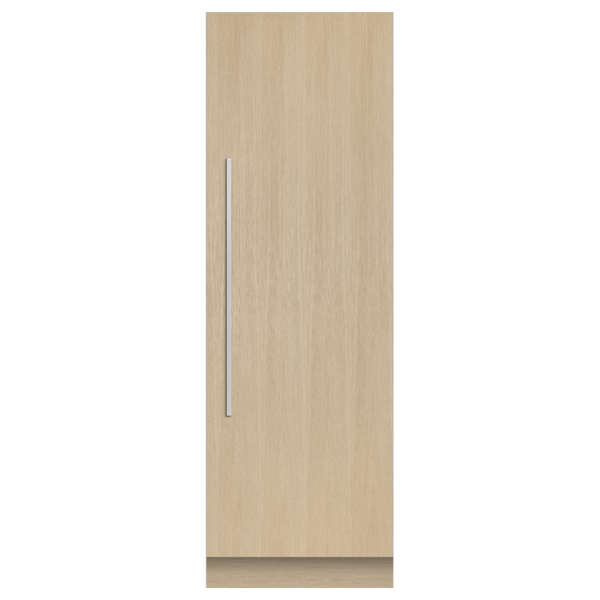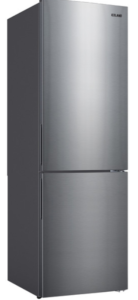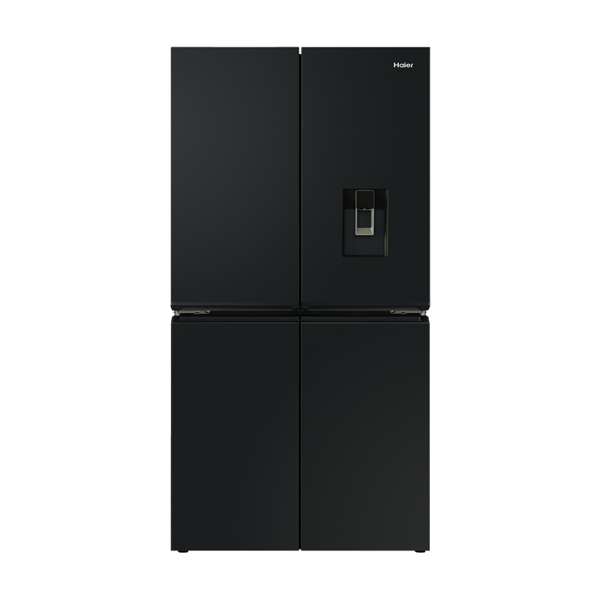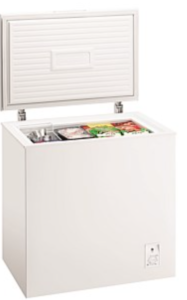The cost of running household appliances adds up quickly. If you’re looking to save money, or reduce your carbon footprint, taking into account the energy usage of your appliances is crucial, as the energy efficiency of your appliances can play a big role in the ongoing electricity costs of your home. And our refrigerators are one of the most important, and most used appliances in our household. After all, we basically never turn them off.
Which is why, if you’re in the hunt for a new fridge, it pays to consider just how energy-efficient it is.
What do you mean by energy-efficient?
Appliances in New Zealand are given an energy star rating out of six. Some models qualify for a “super efficiency” rating of up to ten stars. The higher the stars, the more energy-efficient an appliance is considered. Meaning, it sucks up less power when in use.
A refrigerator (fridge freezer combo) with high energy efficiency will use less power while in use. Not only will this save you money, but it will help reduce the carbon footprint of your machine.
Compare refrigerator brands for free with Canstar Blue!
The most energy-efficient refrigerators
To help you in your hunt for a new fridge, we’ve listed some of the most energy-efficient refrigerators (fridge freezers) currently available, in New Zealand.
Annual running costs have been sourced via Gen Less’ Efficient Appliance Calculator. Estimations* have been made where annual running costs are not available. All prices best prices available online at time of writing.

1. Fisher and Paykel RS6019S2R1 ($5599)
- Annual running costs: $33
- Energy star rating: 5
- Overall capacity: 314L
- Fridge capacity: 314L
- Freezer capacity: 0L
- Configuration: fridge-vertical
Fisher & Paykel
RS6019S2R1
2. Haier HRF241VW ($997)
- Annual running costs: $33
- Energy star rating: 4.5
- Overall capacity: 242L
- Fridge capacity: 242L
- Freezer capacity: 0L
- Configuration: fridge-vertical
3. Liebherr ICNH5123 ($4899)
- Annual running costs: $44
- Energy star rating: 5.5
- Overall capacity: 253L
- Fridge capacity: 183L
- Freezer capacity: 70L
- Configuration: bottom freezer
4. Liebherr ICNH5173 ($5599)
- Annual running costs: $44
- Energy star rating: 5.5
- Overall capacity: 254L
- Fridge capacity: 184L
- Freezer capacity: 70L
- Configuration: bottom freezer
5. Liebherr ICNH5133 ($5599)
- Annual running costs: $46
- Energy star rating: 5.5
- Overall capacity: 254L
- Fridge capacity: 183L
- Freezer capacity: 71L
- Configuration: bottom freezer

The most energy-efficient refrigerator – budget
Finding energy-efficient refrigerators on a budget can be a challenge. As most low-end models tend to have a low energy star rating. However, for under $1000, you can still find a few models that can save you power. If you only need a smaller fridge freezer, the options are wider. Our top pick for a standard size refrigerator is:
Iceland 352339 ($749)
- Annual running costs: $68
- Energy star rating: 4.5
- Overall capacity: 335L
- Fridge capacity: 237L
- Freezer capacity: 98L
- Configuration: bottom freezer
The most energy-efficient refrigerator – small capacity
Haier HRF220TS3 ($819)
- Annual running costs: $60
- Energy star rating: 3.5
- Overall capacity: 198L
- Fridge capacity: 144L
- Freezer capacity: 54L
- Configuration: top freezer
The most energy-efficient refrigerator – large capacity
If you have a large family and enjoy stocking up on groceries, or, sealing away your leftovers. Then a large capacity fridge will be perfect for you. These fridges require more energy, due to their larger size, so it’s crucial you get one that is energy-efficient.

Haier HRF680YPC ($4899)
- Annual running costs: $194
- Energy star rating: 4.5
- Overall capacity: 623L
- Fridge capacity: 358L
- Freezer capacity: 130L
- Configuration: top freezer
The most energy-efficient chest freezers
Sometimes the smaller freezer on your fridge freezer combo just isn’t enough. Whether you stock up on groceries for a large family, or hunt and need more space to freeze your catch, a stand-alone chest freezer can be a great option. Below we have listed two energy-efficient chest freezers, to account for differing size requirements.

Acqua GY-NE15CF ($548)
- Annual running costs: $44
- Energy star rating: 4
- Capacity: 145L
Westinghouse WCM1400WD ($548)
- Annual running costs: $45
- Energy star rating: 4
- Capacity: 142L
The most energy-efficient Panasonic fridge
If you’re considering buying a new fridge, consider Panasonic, the most recent winner of Canstar Blue’s Most Satisfied Customers | Refrigerators award. And whatever your need or budget, there’s no shortage of options. Kiwi consumers have plenty of choice when it comes to Panasonic.
Panasonic NR-BV361B ($1499)
- Annual running costs: $71
- Energy star rating: 4
- Overall capacity: 332L
- Fridge capacity: 233L
- Freezer capacity: 99L
How can I lower the energy use of my refrigerator?
Our fridges run all day, every day. And even energy-efficient refrigerators can rack up the bills if not maintained and used correctly. So, some key tips to lowering the energy use of your fridge are:
- Keep it (almost) full. A full fridge runs more efficiently, but ventilation is crucial as well. Fridges can be fickle to say the least. Try keep them around two-thirds full, this will keep it running efficiently while leaving enough space for proper ventilation
- Keep it closed. If you’re just grabbing the milk to add a drop in your tea, before putting it back, it’s easier to leave the fridge open. But doing so lets a lot of cool air escape, forcing your fridge into overdrive as it cools back down. No matter how quick you are, close the fridge
- Check the seals. If these have worn, or aren’t fitted tightly, cold air can escape. Meaning your fridge has to keep on cooling
- Defrost. Ice build-up can impact the efficiency of your freezer. If ice around the inside is more than 1cm thick, scrape it away
Finding the best power provider
While energy-efficient appliances are a great way to save you money, you also need to be getting a good deal on your power. While less than half of Kiwis believe they are getting a good deal on their power, only 6% of us have actually changed our electricity provider recently.
Ultimately, finding affordable power involves shopping around. And the fact that you’re reading this means that you’re already on the right track to finding a great deal on power. But when comparing power companies, it’s important to consider the broader picture – don’t become too focused on finding a deal with a big prompt payment discount or special perk. Be sure to balance all the rates, discounts, fees and contract periods when making a decision, as well as more personal factors, such as customer service and support.
Compare with Canstar Blue
Canstar Blue’s latest review of NZ power companies compares them on customer satisfaction. The table below is an abridged version of our full results, available here.
^ By clicking on a brand or 'details' button, you will leave Canstar Blue and be taken to either a product provider website or a Canstar Blue NZ brand page. You agree that Canstar Blue NZ’s terms and conditions apply (without limitation) to your use of this service,to any referral to a product provider from our website, and any transaction that follows. Canstar Blue may earn a fee for referrals from its website tables, and from sponsorship (advertising) of certain products. Payment of sponsorship fees does not influence the star rating that Canstar Blue awards to a sponsored product. Fees payable by product providers for referrals and sponsorship may vary between providers, website position, and revenue model. Sponsorship fees may be higher than referral fees. Sponsored products are clearly disclosed as such on website pages. They may appear in a number of areas of the website such as in comparison tables, on hub pages and in articles. Sponsored products may be displayed in a fixed position in a table, regardless of the product’s rating, price or other attributes. The table position of a sponsored product does not indicate any ranking, rating or endorsement by Canstar Blue. See How we are funded for further details.
Canstar Blue NZ Research finalised in April 2023, published in June 2023.
See Our Ratings Methodology
Compare electricity providers with Canstar Blue!
About the author of this page
This report was written by Canstar Content Producer, Caitlin Bingham. Caitlin is an experienced writer whose passion for creativity led her to study communication and journalism. She began her career freelancing as a content writer, before joining the Canstar team.
Enjoy reading this article?
You can like us on Facebook and get social, or sign up to receive more news like this straight to your inbox.
By subscribing you agree to the Canstar Privacy Policy



Share this article